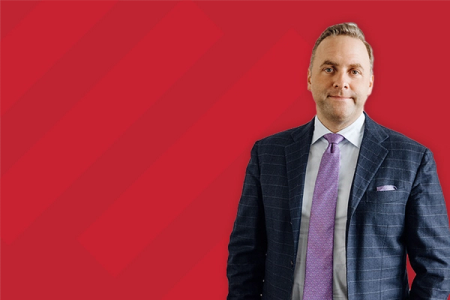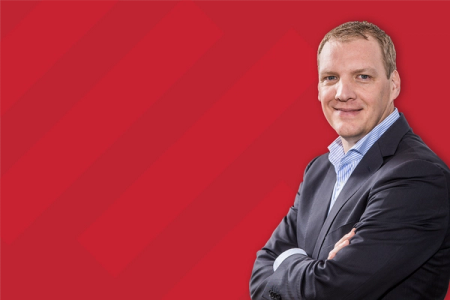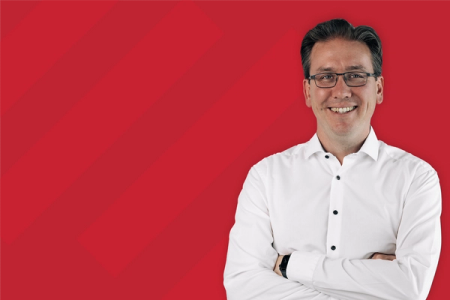In this article...
- The benefits of standardizing your consultancy services
- How standardization helps you eliminate recurring problems
- How Jörg wins more clients with standardized services
- Do you risk missing out on revenue by standardizing?
- How to get started with standardizing your services?
Read time: 6 minutes
In consulting, every project is unique, right?
Contrary to this belief, about 80% of your consultancy projects likely share common elements.
That's right, even in the seemingly bespoke world of consultancy, projects have a surprising amount of overlap. Jörg Reinnarth, CEO of CINTELLIC Consulting Group, for example, once faced a daunting question: how to streamline his consultancy firm's services while still accommodating unique client needs.
In this article, we delve into Jörg's journey and uncover the untapped potential of standardization in consultancy. You'll learn how standardization can elevate the quality of your services, simplify complex projects, and even help you win more clients by showcasing your expertise.
If you're intrigued by the idea of enhancing your consultancy's quality, consistency, and client trust, keep reading. Standardization might just be your secret weapon for success.
The benefits of standardizing your consultancy services
During his interview, Jörg emphasized that standardization is not about offering cookie-cutter solutions, but rather about harnessing the power of knowledge and efficiency.
“I believe in standardization… In my opinion, it should always be the way.” - Jörg Reinnarth, CEO at CINTELLIC Consulting Group
By standardizing services, consultancy firms can ensure a higher level of competency, leading to consistently high-quality projects.
The benefits of standardization include:
- Quality: Standardization delivers high-quality results by leveraging existing knowledge and expertise, with around 80% of the approach applicable to most clients.
- Tailored Solutions: 20% customization meets unique client needs, resulting in quicker, cost-effective, and high-quality solutions.
- CRM, Marketing Automation, and BI: CINTELLIC successfully standardizes projects in these areas, streamlining the process with a catalog of 600 requirements and selected technologies.
- Speed and Consistency: Standardization eliminates time-consuming client interviews, covering 90% of client needs with 600 pre-defined requirements. Interviews focus on the remaining 10%, improving speed, quality, and consistency.
Moving from the benefits of standardizing consultancy services, let's now explore how standardization becomes a secret weapon during the implementation phase.
How standardization helps eliminate recurring problems
Think your projects are too unique for standardization? Think again! Even in the realm of diverse projects, common issues can rear their heads.
One of Jörg’s most profound discoveries in standardization was that despite the apparent uniqueness of each project he encountered, a surprising number of them shared strikingly similar pitfalls and challenges.
Jörg recognized that these recurring issues were not anomalies but rather inherent to the nature of consultancy projects.
By leveraging standardized processes to detect and tackle these shared problems, you can elevate your solution delivery game and guarantee client satisfaction. It's not a silver bullet for making your projects entirely risk-free, but it will empower you to establish regular checkpoints that vanquish the most prevalent stumbling blocks.
“We take the sheet and say, ‘It's week five, okay, we have to focus on this.’ And then it pops up, and they say, ‘How could you know this?’ And I said, ‘Yeah, we did it on so many times, and it's always the same.’" - Jörg Reinnarth, CEO at CINTELLIC Consulting Group
Jörg's ability to identify these commonalities allowed him to adapt his approach. Instead of reinventing the wheel for each project, he began implementing standardized processes and checkpoints at strategic intervals. These measures weren't about stifling creativity or flexibility but rather about proactively addressing the known pitfalls that had derailed countless projects before.
This newfound approach not only improved project outcomes but also resonated with his clients. They appreciated the foresight and proactive measures that Jörg and his team brought to the table, often remarking on how he seemed to predict their project's challenges.
How Jörg wins more clients with standardized services
When 80-90% of your services become productized and repeatable, it becomes very easy to demonstrate to potential clients what kinds of results they can expect at each stage of the project.
By demonstrating this level of hands-on experience, it becomes much easier to win trust.
This strategy resolves one of the biggest challenges in winning clients in consultancy: demonstrating (with data) that you know how to do something better than your competitors.
Without this hard evidence, clients are simply bamboozled by multiple consultancies claiming—without anything to back up their claims—that they can carry out the project better than the others.
Here are the key takeaways from the interview with Jörg:
- Demonstrating a track record of successful projects is crucial for building trust with clients.
- Standardization provides a tangible way to showcase your expertise and experience.
- Clients are wary of empty claims, so showing concrete results is essential.
- Standardized services help establish credibility and differentiate your consultancy.
- As your client base grows, your reputation and influence in the industry become more powerful.
How to get started with standardizing your consultancy services
Jörg used to work at a large 15,000-person consultancy that attempted to standardize everything at once.
The result was a mess.
It took a look of time and money for every office to present standardized processes, and they were still left with the question: how to bring these standardized services to branches in other countries and get them to start using processes they weren’t familiar with?
If you've ever worked in a large consultancy reliant on the CEO's network for revenue, you'll know the struggle. It's a balancing act, identifying those repetitive, perhaps less thrilling projects that contribute significantly to the company's bottom line.
CINTELLIC faced the same dilemma when they embarked on their standardization journey. But their solution was refreshingly pragmatic.
Instead of attempting a colossal overhaul, they adopted a measured approach. Each year, they meticulously selected two or three processes for standardization.
In this first year, this was a worrying decision. Jörg was left with troubling questions such as:
- Did we choose the right projects to standardize?
- Are we losing money or revenue?
- Is our future in jeopardy?
- Etc.
In the end, he resolved, “No, we will work as before. We check if we can do this, and we do this, but we start getting better in each field."
And this is the advice Jörg would offer to any consultancy looking to get started with standardization.
“Don't have the fear that if you focus on a certain kind of project, you're going to die. But standardize your projects step by step because then you get more quality, you're getting better. And it's better for the customer.” - Jörg Reinnarth, CEO at CINTELLIC Consulting Group
Over time, you may lose some of your MDs or Partners as they realize the company no longer depends on them to generate the revenue, but in the end, you’ll be left with a far more robust business model that wins projects through expertise, not networks.
The end of the standardization debate, or just the beginning?
In the eyes of Jörg Reinnarth, there’s no need for a debate around standardization— it’s the cornerstone of success in consultancy, guaranteeing quality, efficiency, and client trust.
By adopting standardized approaches, consultancy firms can secure their place as industry leaders, delivering tailored solutions and sustainable growth.
Are you convinced that standardization is the key to success in consulting? Let us know your thoughts in the comments!



